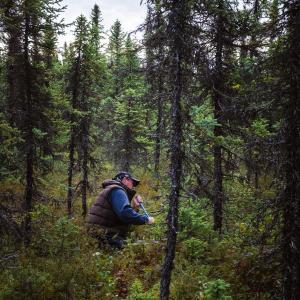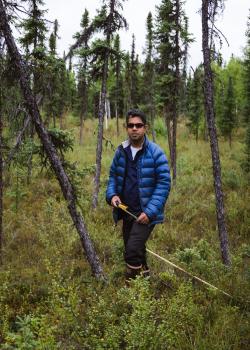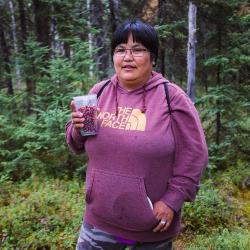The PolarTREC Experience
PolarTREC, funded by ARCUS (Arctic Research Consortium of the United States) and NSF (the National Science Foundation), brings educators to Polar Regions for immersive field work with researchers. This professional development opportunity allows educators to share real world experience with polar science in their communities, in the form of outreach and education. As an exhibit developer who works on projects related to climate change in the Arctic, PolarTREC has been an invaluable resource. There is a big difference between reading about a place and seeing it, smelling it, touching it, and listening to the stories of those who live there. I am now better prepared to communicate issues specific to Arctic science and Arctic communities to audiences in the Lower 48.
Summary of the Science

Alaska’s land, water, plants, wildlife, and seasons are undergoing a great upheaval, and its people, especially the tribal communities living in remote villages are directly and severely impacted by these changes. The project that I assisted with will provide the traditionally-underserved tribal communities of the Upper Kuskokwim region the motivation, resources, climate science knowledge and skills to study the impact of climate change on their tribal way of life and environment.
This project will establish local climate and permafrost observation system and map land cover and permafrost in the Upper Kuskokwim region. It will also develop a geo-hazard map for the region to facilitate safe subsistence and recreational practices and land use. The data, knowledge, and skills gained through this project will benefit the tribal communities in implementation of safe land use practices, and planning for the future.
Linking PolarTREC to my Museum
My institution, the Oregon Museum of Science and Industry (OMSI), sits in Portland, Oregon yet is closely connected to the Arctic through ongoing collaborations with the University of Alaska Fairbanks. 
Science and Community

For science to “stick” with visitors at my museum and the classrooms we serve, it must feel relevant. The exhibits I work on must feature not only research, but the people who do it and the people it impacts. In this way, Drs. Kholodov and Panda provided me with the perfect field experience, because I had the privilege to meet, work with, and befriend a community that depends on permafrost for its survival and for the survival of its cultural traditions. By experiencing field research in Nikolai, I am better prepared to advance public discourse around issues that, for the Lower 48, can feel impersonal and very far away. I could already explain a thermokarst feature or a permafrost probe before I left; thanks to PolarTREC, I carry a bone-deep appreciation for why Arctic research matters. It’s now my job to spread that appreciation wherever I go.
Post-expedition and Future Plans
I continue work on permafrost outreach in association with Under the Arctic, and I am eagerly looking forward to the opportunity to work on an NSF-funded project that will result in a traveling exhibition about snow. In the near future, I will be absorbing as much information about snow as I can, which my network built through PolarTREC will support. I hope to return to Nikolai within the next couple of years to learn about snow in the Alaskan Interior, and my dream is to feature the community in our upcoming exhibition.

| Attachment | Size |
|---|---|
| Download Report (PDF - 805 KB)805.17 KB | 805.17 KB |
This program is supported by the National Science Foundation. Any opinions, findings, and conclusions or recommendations expressed by this program are those of the PIs and coordinating team, and do not necessarily reflect the views of the National Science Foundation.
